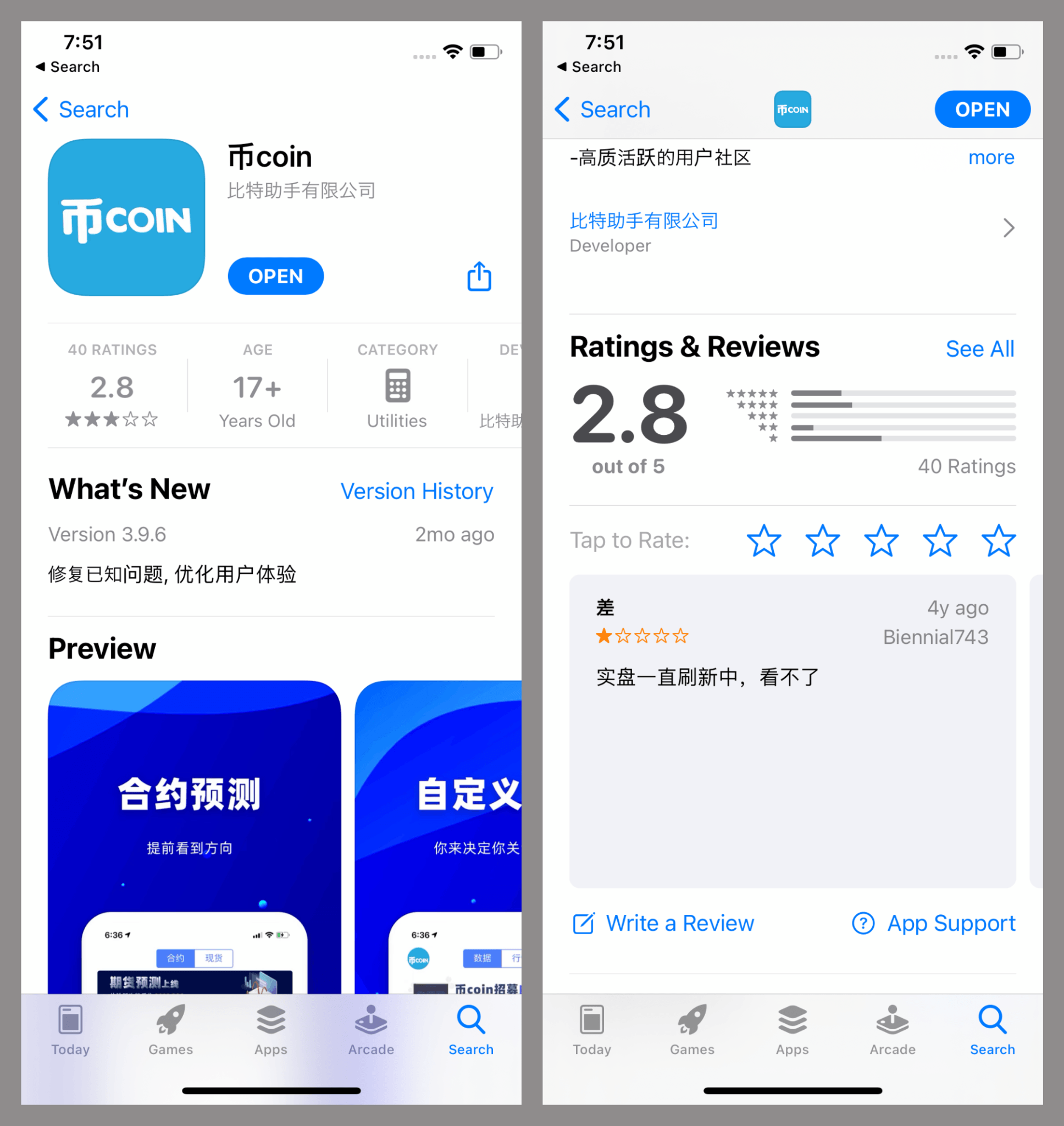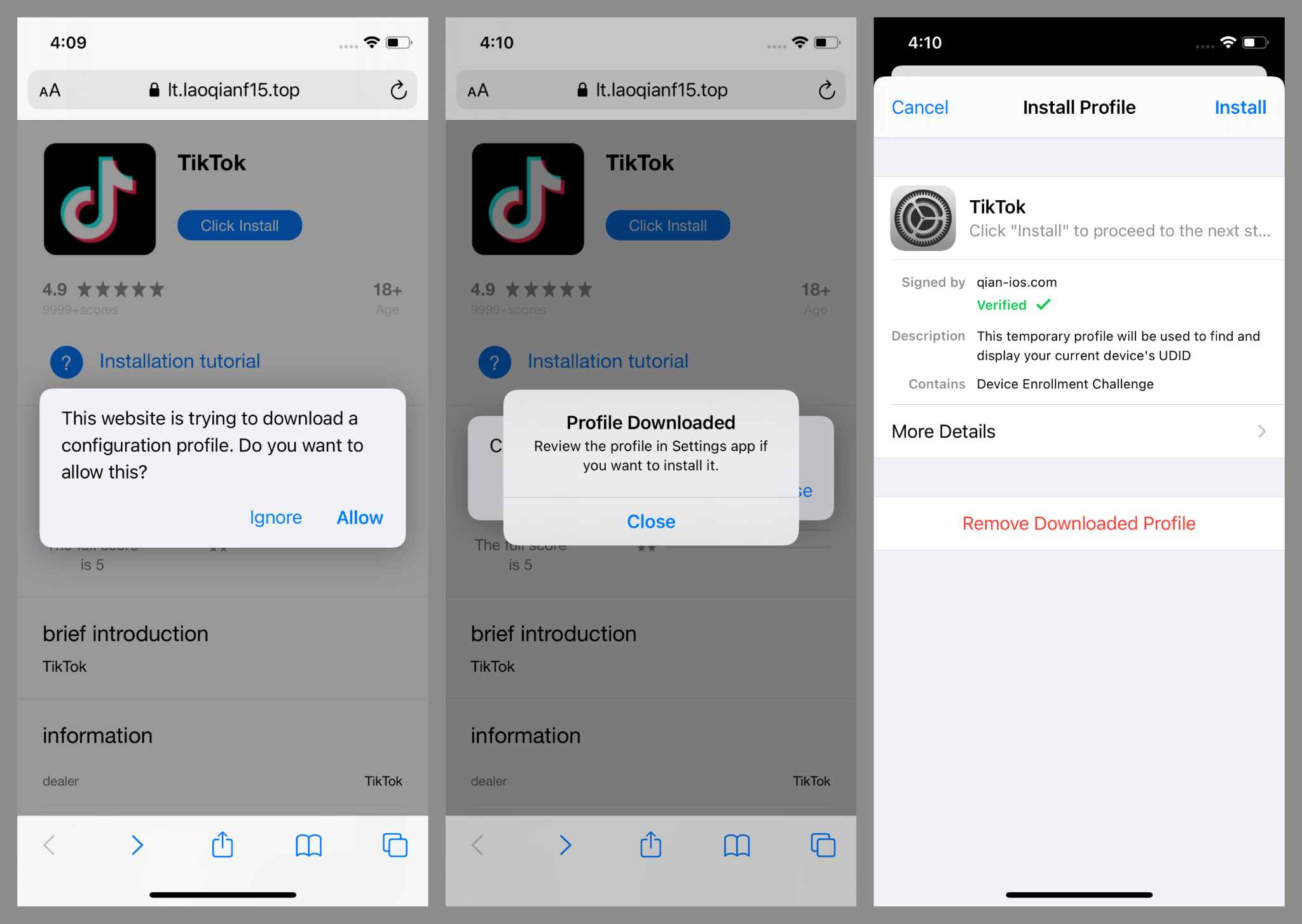Uncategorized
Saving Your Wallet Details, Seed Phrase as a Photo on Your Phone? This Trojan May Be Targeting You

A new strain of mobile spyware, dubbed SparkKitty, has infiltrated Apple’s App Store and Google Play, posing as crypto-themed and modded apps to stealthily extract images of seed phrases and wallet credentials.
The malware appears to be a successor to SparkCat, a campaign first uncovered in early 2025, which used fake support chat modules to silently access user galleries and exfiltrate sensitive screenshots.
SparkKitty takes the same strategy several steps further, Kaspersky researchers said in a Monday post.
Unlike SparkCat, which mostly spreads through unofficial Android packages, SparkKitty has been confirmed inside multiple iOS and Android apps available through official stores, including a messaging app with crypto exchange features (with over 10,000 installs on Google Play) and an iOS app called “币coin,” disguised as a portfolio tracker.

At the core of the iOS variant is a weaponized version of the AFNetworking or Alamofire framework, where attackers embedded a custom class that auto-runs on app launch using Objective-C’s +load selector.
On startup, it checks a hidden configuration value, fetches a command-and-control (C2) address, and scans the user’s gallery and begins uploading images. A C2 address instructs the malware on what to do, such as when to steal data or send files, and receives the stolen information back.
The Android variant utilizes modified Java libraries to achieve the same goal. OCR is applied via Google ML Kit to parse images. If a seed phrase or private key is detected, the file is flagged and sent to the attacker’s servers.
Installation on iOS is done through enterprise provisioning profiles, or a method meant for internal enterprise apps but often exploited for malware.

Victims are tricked into manually trusting a developer certificate linked to “SINOPEC SABIC Tianjin Petrochemical Co. Ltd.,” giving SparkKitty system-level permissions.
Several C2 addresses used AES-256 encrypted configuration files hosted on obfuscated servers.
Once decrypted, they point to payload fetchers and endpoints, such as/api/putImages and /api/getImageStatus, where the app determines whether to upload or delay photo transmissions.
Kaspersky researchers discovered other versions of the malware utilizing a spoofed OpenSSL library (libcrypto.dylib) with obfuscated initialization logic, indicating an evolving toolset and multiple distribution vectors.
While most apps appear to be targeted at users in China and Southeast Asia, nothing about the malware limits its regional scope.
Apple and Google have taken down the apps in question following disclosure, but the campaign has likely been active since early 2024 and may still be ongoing through side loaded variants and clone stores, researchers warned.
Read more: North Korean Hackers Are Targeting Top Crypto Firms With Malware Hidden in Job Applications
Business
Crypto Trading Firm Keyrock Buys Luxembourg’s Turing Capital in Asset Management Push

Crypto trading firm Keyrock said it’s expanding into asset and wealth management by acquiring Turing Capital, a Luxembourg-registered alternative investment fund manager.
The deal, announced on Tuesday, marks the launch of Keyrock’s Asset and Wealth Management division, a new business unit dedicated to institutional clients and private investors.
Keyrock, founded in Brussels, Belgium and best known for its work in market making, options and OTC trading, said it will fold Turing Capital’s investment strategies and Luxembourg fund management structure into its wider platform. The division will be led by Turing Capital co-founder Jorge Schnura, who joins Keyrock’s executive committee as president of the unit.
The company said the expansion will allow it to provide services across the full lifecycle of digital assets, from liquidity provision to long-term investment strategies. «In the near future, all assets will live onchain,» Schnura said, noting that the merger positions the group to capture opportunities as traditional financial products migrate to blockchain rails.
Keyrock has also applied for regulatory approval under the EU’s crypto framework MiCA through a filing with Liechtenstein’s financial regulator. If approved, the firm plans to offer portfolio management and advisory services, aiming to compete directly with traditional asset managers as well as crypto-native players.
«Today’s launch sets the stage for our longer-term ambition: bringing asset management on-chain in a way that truly meets institutional standards,» Keyrock CSO Juan David Mendieta said in a statement.
Read more: Stablecoin Payments Projected to Top $1T Annually by 2030, Market Maker Keyrock Says
Business
Crypto Trading Firm Keyrock Buys Luxembourg’s Turing Capital in Asset Management Push

Crypto trading firm Keyrock said it’s expanding into asset and wealth management by acquiring Turing Capital, a Luxembourg-registered alternative investment fund manager.
The deal, announced on Tuesday, marks the launch of Keyrock’s Asset and Wealth Management division, a new business unit dedicated to institutional clients and private investors.
Keyrock, founded in Brussels, Belgium and best known for its work in market making, options and OTC trading, said it will fold Turing Capital’s investment strategies and Luxembourg fund management structure into its wider platform. The division will be led by Turing Capital co-founder Jorge Schnura, who joins Keyrock’s executive committee as president of the unit.
The company said the expansion will allow it to provide services across the full lifecycle of digital assets, from liquidity provision to long-term investment strategies. «In the near future, all assets will live onchain,» Schnura said, noting that the merger positions the group to capture opportunities as traditional financial products migrate to blockchain rails.
Keyrock has also applied for regulatory approval under the EU’s crypto framework MiCA through a filing with Liechtenstein’s financial regulator. If approved, the firm plans to offer portfolio management and advisory services, aiming to compete directly with traditional asset managers as well as crypto-native players.
«Today’s launch sets the stage for our longer-term ambition: bringing asset management on-chain in a way that truly meets institutional standards,» Keyrock CSO Juan David Mendieta said in a statement.
Read more: Stablecoin Payments Projected to Top $1T Annually by 2030, Market Maker Keyrock Says
Business
Gemini Shares Slide 6%, Extending Post-IPO Slump to 24%

Gemini Space Station (GEMI), the crypto exchange founded by Cameron and Tyler Winklevoss, has seen its shares tumble by more than 20% since listing on the Nasdaq last Friday.
The stock is down around 6% on Tuesday, trading at $30.42, and has dropped nearly 24% over the past week. The sharp decline follows an initial surge after the company raised $425 million in its IPO, pricing shares at $28 and valuing the firm at $3.3 billion before trading began.
On its first day, GEMI spiked to $45.89 before closing at $32 — a 14% premium to its offer price. But since hitting that high, shares have plunged more than 34%, erasing most of the early enthusiasm from public market investors.
The broader crypto equity market has remained more stable. Coinbase (COIN), the largest U.S. crypto exchange, is flat over the past week. Robinhood (HOOD), which derives part of its revenue from crypto, is down 3%. Token issuer Circle (CRCL), on the other hand, is up 13% over the same period.
Part of the pressure on Gemini’s stock may stem from its financials. The company posted a $283 million net loss in the first half of 2025, following a $159 million loss in all of 2024. Despite raising fresh capital, the numbers suggest the business is still far from turning a profit.
Compass Point analyst Ed Engel noted that GEMI is currently trading at 26 times its annualized first-half revenue. That multiple — often used to gauge whether a stock is expensive — means investors are paying 26 dollars for every dollar the company is expected to generate in sales this year. For a loss-making company in a volatile sector, that’s a steep price, and could be fueling investor skepticism.
-

 Business11 месяцев ago
Business11 месяцев ago3 Ways to make your business presentation more relatable
-

 Fashion11 месяцев ago
Fashion11 месяцев agoAccording to Dior Couture, this taboo fashion accessory is back
-

 Entertainment11 месяцев ago
Entertainment11 месяцев ago10 Artists who retired from music and made a comeback
-

 Entertainment11 месяцев ago
Entertainment11 месяцев ago\’Better Call Saul\’ has been renewed for a fourth season
-

 Entertainment11 месяцев ago
Entertainment11 месяцев agoNew Season 8 Walking Dead trailer flashes forward in time
-

 Business11 месяцев ago
Business11 месяцев ago15 Habits that could be hurting your business relationships
-

 Entertainment11 месяцев ago
Entertainment11 месяцев agoMeet Superman\’s grandfather in new trailer for Krypton
-

 Entertainment11 месяцев ago
Entertainment11 месяцев agoDisney\’s live-action Aladdin finally finds its stars




